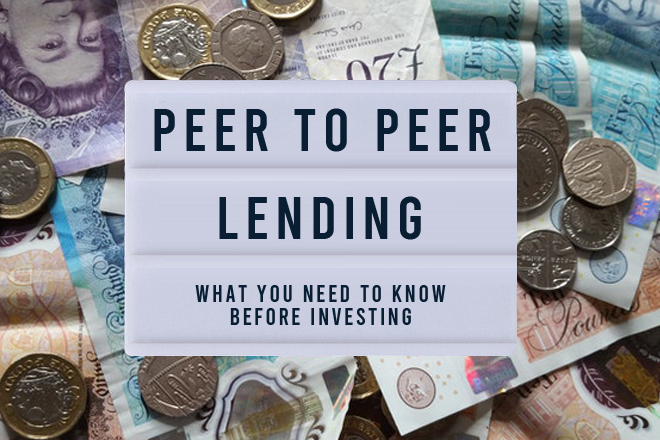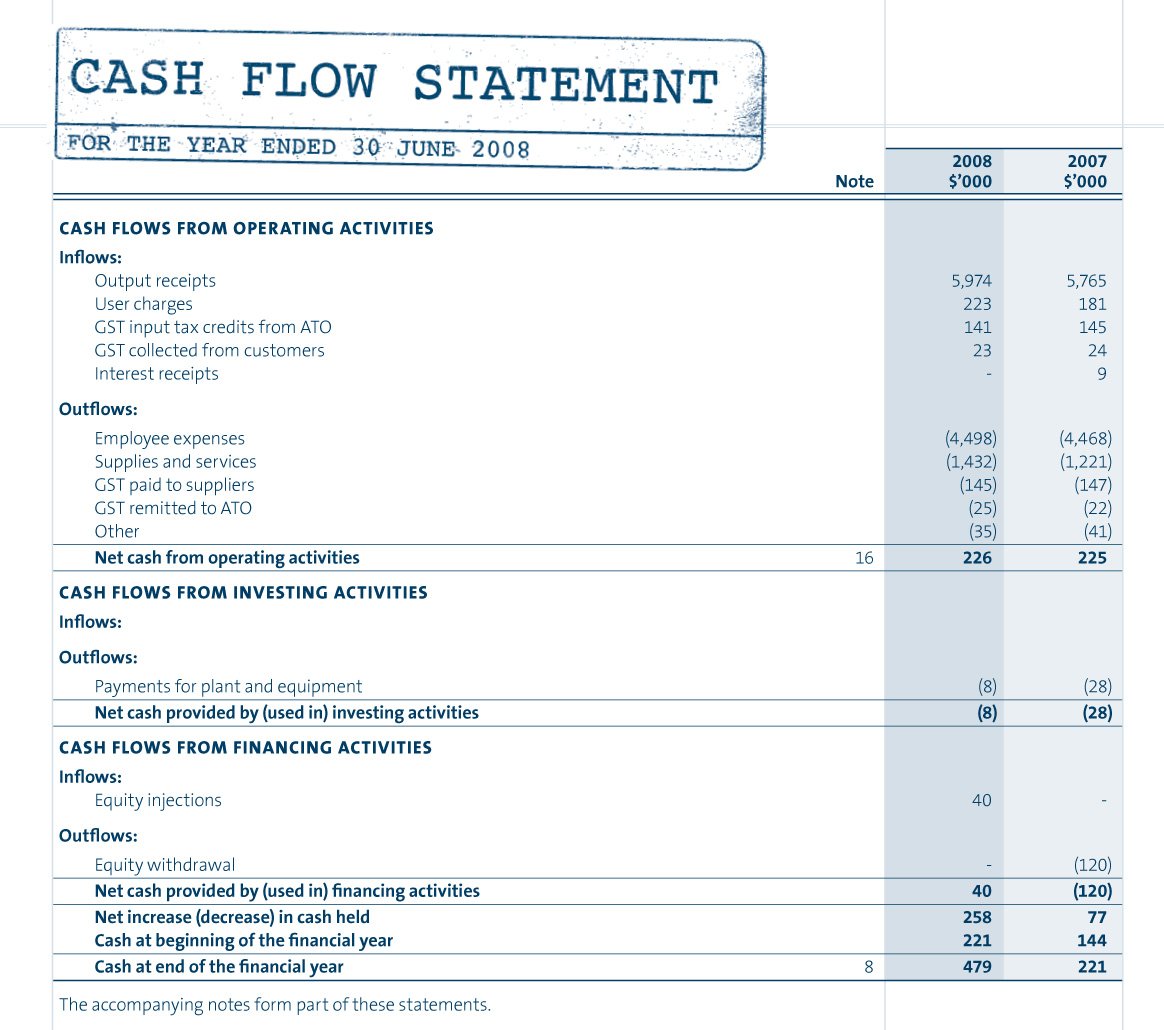Why Cash Flow is King in Investing
Cash flow is the lifeblood of any investment strategy. It provides a regular stream of income, reduces financial stress, and increases financial flexibility. When it comes to building wealth, cash flow is the key to unlocking long-term financial freedom. By investing in assets that produce consistent cash flow, investors can create a steady stream of income that can help them achieve their financial goals.
One of the primary benefits of cash flow is that it provides a regular source of income. This can be especially important for investors who are looking to retire or achieve financial independence. By investing in assets that produce cash flow, investors can create a steady stream of income that can help them cover their living expenses, without having to rely on the sale of assets or other forms of income.
In addition to providing a regular source of income, cash flow also reduces financial stress. When investors have a steady stream of income, they are less likely to worry about market fluctuations or economic downturns. This can help them make more informed investment decisions, and avoid making emotional or impulsive decisions based on short-term market volatility.
Finally, cash flow increases financial flexibility. By having a steady stream of income, investors can take advantage of new investment opportunities, or respond to changes in the market. This can help them stay ahead of the curve, and achieve their long-term financial goals.
So, what are the best assets that produce cash flow? While there are many different options to choose from, some of the most popular include dividend-paying stocks, real estate investment trusts (REITs), and peer-to-peer lending. These assets offer a regular stream of income, and can provide a relatively low-risk way to generate cash flow.
For example, dividend-paying stocks like Johnson & Johnson and Procter & Gamble offer a regular stream of income, and have a long history of paying consistent dividends. REITs like Realty Income and National Retail Properties offer a regular stream of income, and provide a way to invest in real estate without directly owning physical properties. Peer-to-peer lending platforms like Lending Club and Prosper offer a regular stream of income, and provide a way to invest in loans to individuals and small businesses.
By investing in these types of assets, investors can create a steady stream of cash flow that can help them achieve their long-term financial goals. Whether you’re looking to retire, achieve financial independence, or simply build wealth over time, cash flow is the key to unlocking long-term financial freedom.
How to Create a Cash Flow Machine: Investing in Dividend-Paying Stocks
Dividend-paying stocks are a popular choice for investors looking to create a cash flow machine. These stocks offer a regular stream of income, relatively lower volatility, and the opportunity to invest in established companies with a proven track record of paying consistent dividends.
One of the primary benefits of investing in dividend-paying stocks is the potential for regular income. Many established companies, such as Johnson & Johnson and Procter & Gamble, have a long history of paying consistent dividends to their shareholders. This can provide a regular stream of income, which can help investors achieve their financial goals.
In addition to providing regular income, dividend-paying stocks also offer relatively lower volatility. These stocks tend to be less volatile than growth stocks, which can be subject to significant price fluctuations. This can make dividend-paying stocks a more attractive option for investors who are looking for a relatively stable source of income.
Another benefit of investing in dividend-paying stocks is the opportunity to invest in established companies. Many of these companies have a proven track record of success, and have been paying consistent dividends to their shareholders for years. This can provide investors with a sense of security and stability, which can be attractive in uncertain market conditions.
Some of the best dividend-paying stocks to consider include:
Johnson & Johnson (JNJ): A healthcare company with a long history of paying consistent dividends.
Procter & Gamble (PG): A consumer goods company with a proven track record of paying dividends.
3M (MMM): A multinational conglomerate with a long history of paying consistent dividends.
ExxonMobil (XOM): An energy company with a proven track record of paying dividends.
By investing in these types of stocks, investors can create a cash flow machine that can provide a regular stream of income and help them achieve their financial goals.
It’s worth noting that while dividend-paying stocks can be a great option for investors looking for regular income, they may not be the best choice for everyone. Investors should carefully consider their individual financial goals and risk tolerance before investing in any type of stock.
In addition to dividend-paying stocks, there are many other types of assets that can produce cash flow, including real estate investment trusts (REITs), peer-to-peer lending, and royalty-generating assets. By diversifying their portfolio across different asset classes, investors can create a cash flow machine that can provide a regular stream of income and help them achieve their financial goals.
Real Estate Investing for Cash Flow: Rental Properties and REITs
Real estate investing is a popular way to generate cash flow, and for good reason. Rental properties and Real Estate Investment Trusts (REITs) offer a tangible asset that can provide a regular stream of income, as well as the potential for long-term appreciation.
One of the primary benefits of investing in rental properties is the potential for regular income. By renting out a property, investors can generate a steady stream of income in the form of rental payments. This can be especially attractive in areas with high demand for housing, such as cities with growing populations or tourist destinations.
In addition to providing regular income, rental properties also offer the potential for long-term appreciation. As the value of the property increases over time, investors can sell the property for a profit or continue to rent it out for increased income.
However, investing in rental properties can also come with significant responsibilities, such as managing tenants and maintaining the property. For investors who want to avoid these responsibilities, REITs can be a more attractive option.
REITs allow investors to own a portion of a property or a portfolio of properties without directly managing them. This can provide a more hands-off approach to real estate investing, while still offering the potential for regular income and long-term appreciation.
Some of the best REITs to consider include:
Simon Property Group (SPG): A retail REIT with a diverse portfolio of properties across the United States.
Realty Income (O): A REIT that specializes in single-tenant properties, offering a stable source of income.
National Retail Properties (NNN): A REIT that focuses on retail properties, offering a diverse portfolio of tenants.
By investing in rental properties or REITs, investors can create a cash flow machine that can provide a regular stream of income and help them achieve their financial goals.
It’s worth noting that real estate investing can be subject to market fluctuations and other risks, such as changes in local market conditions or tenant vacancies. However, with proper research and due diligence, investors can minimize these risks and create a successful real estate investment portfolio.
In addition to real estate investing, there are many other types of assets that can produce cash flow, including dividend-paying stocks, peer-to-peer lending, and royalty-generating assets. By diversifying their portfolio across different asset classes, investors can create a cash flow machine that can provide a regular stream of income and help them achieve their financial goals.
Peer-to-Peer Lending: A New Era in Cash Flow Investing
Peer-to-peer lending has emerged as a popular investment option for those seeking regular income and diversification. This innovative approach allows individuals to lend money to borrowers, bypassing traditional financial institutions. By investing in peer-to-peer lending platforms, investors can earn interest on their investment, creating a new stream of cash flow.
One of the key benefits of peer-to-peer lending is the relatively low minimum investment requirement. This makes it accessible to a wider range of investors, including those who may not have a large amount of capital to invest. Additionally, peer-to-peer lending platforms often provide a diversified portfolio of loans, reducing the risk of default and increasing the potential for consistent cash flow.
Platforms like Lending Club and Prosper have made it easy for investors to participate in peer-to-peer lending. These platforms connect borrowers with investors, handling the loan origination, servicing, and collection process. By investing in these platforms, individuals can earn interest on their investment, typically ranging from 5-7% per annum.
Peer-to-peer lending also offers the opportunity to diversify a portfolio, reducing reliance on traditional assets like stocks and bonds. By investing in a diversified portfolio of loans, individuals can spread risk and increase the potential for consistent cash flow. Furthermore, peer-to-peer lending platforms often provide a regular income stream, as borrowers make monthly payments on their loans.
When investing in peer-to-peer lending, it’s essential to consider the creditworthiness of borrowers and the platform’s underwriting standards. A robust underwriting process can help minimize the risk of default, ensuring a consistent cash flow stream. Additionally, investors should diversify their portfolio across different loan grades and terms to optimize returns and minimize risk.
As one of the best assets that produce cash flow, peer-to-peer lending offers a unique opportunity for investors to generate regular income and diversify their portfolio. By investing in reputable platforms and diversifying across different loan grades and terms, individuals can create a consistent cash flow stream and achieve their financial goals.
Creating a Cash Flow Stream with Royalty-Generating Assets
Royalty-generating assets offer a unique opportunity for investors to create a consistent cash flow stream. These assets, which include intellectual property, music royalties, and franchise agreements, can provide a regular income stream and long-term appreciation. By investing in royalty-generating assets, individuals can diversify their portfolio and reduce their reliance on traditional assets like stocks and bonds.
Intellectual property, such as patents and trademarks, can generate significant royalties for investors. Companies like IBM and Microsoft have built vast portfolios of intellectual property, generating billions of dollars in royalties each year. By investing in intellectual property, individuals can tap into this lucrative market and create a consistent cash flow stream.
Music royalties are another type of royalty-generating asset that can provide a regular income stream. Music royalties are paid to songwriters, publishers, and record labels for the use of their music. With the rise of streaming services like Spotify and Apple Music, music royalties have become a significant source of income for investors. By investing in music royalties, individuals can earn a percentage of the revenue generated by their favorite songs.
Franchise agreements are another type of royalty-generating asset that can provide a consistent cash flow stream. Franchise agreements allow individuals to invest in established brands like McDonald’s and Subway, earning a percentage of the revenue generated by the franchise. By investing in franchise agreements, individuals can tap into the success of established brands and create a regular income stream.
Royalty-generating assets are considered some of the best assets that produce cash flow due to their potential for regular income and long-term appreciation. By investing in these assets, individuals can create a diversified portfolio and reduce their reliance on traditional assets. Additionally, royalty-generating assets can provide a hedge against inflation and market volatility, making them an attractive option for investors seeking consistent cash flow.
When investing in royalty-generating assets, it’s essential to conduct thorough research and due diligence. Investors should carefully evaluate the potential for royalties, the competitive landscape, and the potential for long-term appreciation. By doing so, individuals can make informed investment decisions and create a consistent cash flow stream that meets their financial goals.
In conclusion, royalty-generating assets offer a unique opportunity for investors to create a consistent cash flow stream. By investing in intellectual property, music royalties, and franchise agreements, individuals can diversify their portfolio and reduce their reliance on traditional assets. With the potential for regular income and long-term appreciation, royalty-generating assets are an attractive option for investors seeking consistent cash flow.
Investing in Index Funds and ETFs for Consistent Cash Flow
Index funds and ETFs have become increasingly popular among investors seeking consistent cash flow and diversification. These investment vehicles offer a unique opportunity to invest in a broad range of assets, including stocks, bonds, and commodities, with relatively lower fees and minimal effort. By investing in index funds and ETFs, individuals can create a consistent cash flow stream and achieve their long-term financial goals.
One of the primary benefits of investing in index funds and ETFs is the potential for regular income. Many index funds and ETFs distribute dividends and interest income to shareholders, providing a regular stream of cash flow. Additionally, index funds and ETFs often track a specific market index, such as the S&P 500, providing broad diversification and reducing the risk of individual stock ownership.
Index funds and ETFs are also relatively low-cost investment options, with fees significantly lower than actively managed funds. This makes them an attractive option for investors seeking to minimize costs and maximize returns. Furthermore, index funds and ETFs offer flexibility, allowing investors to easily adjust their portfolio allocation and rebalance their investments as needed.
When investing in index funds and ETFs, it’s essential to consider the underlying assets and the investment strategy. Investors should evaluate the fund’s or ETF’s track record, fees, and investment approach to ensure it aligns with their financial goals and risk tolerance. By doing so, individuals can create a consistent cash flow stream and achieve long-term financial success.
Some of the best assets that produce cash flow, such as dividend-paying stocks and real estate investment trusts (REITs), can be accessed through index funds and ETFs. For example, the Vanguard Dividend Appreciation ETF (VIG) tracks the performance of dividend-paying stocks, providing a regular stream of income and long-term growth potential. Similarly, the Schwab U.S. REIT ETF (SCHH) tracks the performance of REITs, offering a diversified portfolio of real estate investments and regular income.
In addition to providing regular income and diversification, index funds and ETFs offer tax efficiency. Many index funds and ETFs are designed to minimize tax liabilities, allowing investors to keep more of their returns. By investing in tax-efficient index funds and ETFs, individuals can minimize taxes and maximize cash flow, achieving their long-term financial goals.
Overall, investing in index funds and ETFs offers a unique opportunity to create a consistent cash flow stream and achieve long-term financial success. With their relatively low fees, broad diversification, and flexibility, index funds and ETFs are an attractive option for investors seeking to maximize returns and minimize costs.
Building a Cash Flow Portfolio: Diversification and Risk Management
Building a cash flow portfolio requires careful consideration of diversification and risk management. A well-diversified portfolio can help minimize risk and maximize returns, while a poorly diversified portfolio can lead to significant losses. By spreading investments across different asset classes, investors can reduce their reliance on any one investment and increase the potential for consistent cash flow.
One of the key benefits of diversification is the reduction of risk. By investing in a variety of assets, investors can minimize their exposure to any one particular market or sector. This can help reduce the impact of market volatility and ensure a more consistent cash flow stream. Additionally, diversification can help investors take advantage of different investment opportunities, increasing the potential for long-term growth and returns.
When building a cash flow portfolio, it’s essential to consider the different asset classes available. These can include dividend-paying stocks, real estate investment trusts (REITs), peer-to-peer lending, and index funds and ETFs. Each of these asset classes offers a unique set of benefits and risks, and investors should carefully evaluate their options before making a decision.
Dividend-paying stocks, for example, offer a regular stream of income and relatively lower volatility. REITs provide a way to invest in real estate without directly owning physical properties, and can offer a consistent cash flow stream. Peer-to-peer lending allows investors to lend money to individuals or businesses, earning interest on their investment. Index funds and ETFs offer broad diversification and relatively lower fees, making them an attractive option for investors seeking consistent cash flow.
When diversifying a cash flow portfolio, it’s also essential to consider the concept of correlation. Correlation refers to the way in which different investments move in relation to each other. By investing in assets with low correlation, investors can reduce their risk and increase the potential for consistent cash flow. For example, investing in a mix of dividend-paying stocks and REITs can provide a diversified portfolio with relatively low correlation.
Some of the best assets that produce cash flow, such as real estate and dividend-paying stocks, can be volatile and subject to market fluctuations. By diversifying a portfolio across different asset classes, investors can minimize their exposure to any one particular market or sector. This can help reduce the impact of market volatility and ensure a more consistent cash flow stream.
In addition to diversification, risk management is also essential when building a cash flow portfolio. This can include strategies such as dollar-cost averaging, stop-loss orders, and position sizing. By implementing these strategies, investors can minimize their risk and maximize their returns, increasing the potential for consistent cash flow.
Overall, building a cash flow portfolio requires careful consideration of diversification and risk management. By spreading investments across different asset classes and minimizing risk, investors can increase the potential for consistent cash flow and achieve their long-term financial goals.
Maximizing Cash Flow: Tax-Efficient Investing Strategies
Tax-efficient investing strategies are essential for maximizing cash flow and achieving long-term financial goals. By minimizing taxes and maximizing returns, investors can increase their cash flow and build wealth over time. In this article, we will discuss the importance of tax-efficient investing strategies, including tax-loss harvesting, charitable donations, and tax-deferred accounts.
Tax-loss harvesting is a strategy that involves selling securities that have declined in value to realize losses, which can be used to offset gains from other investments. This can help reduce tax liabilities and increase cash flow. For example, if an investor sells a security for a loss of $10,000, they can use that loss to offset gains from other investments, reducing their tax liability and increasing their cash flow.
Charitable donations are another tax-efficient investing strategy that can help maximize cash flow. By donating to charity, investors can reduce their tax liability and increase their cash flow. For example, if an investor donates $10,000 to charity, they can deduct that amount from their taxable income, reducing their tax liability and increasing their cash flow.
Tax-deferred accounts, such as 401(k) and IRA accounts, are also an effective way to maximize cash flow. These accounts allow investors to contribute pre-tax dollars, reducing their taxable income and increasing their cash flow. The funds in these accounts grow tax-deferred, meaning that investors won’t have to pay taxes on the gains until they withdraw the funds in retirement.
Some of the best assets that produce cash flow, such as real estate and dividend-paying stocks, can be held in tax-deferred accounts, allowing investors to maximize their cash flow and reduce their tax liability. For example, if an investor holds a rental property in a tax-deferred account, they can deduct the mortgage interest and property taxes from their taxable income, reducing their tax liability and increasing their cash flow.
In addition to these strategies, investors can also use tax-efficient investing techniques, such as tax-loss swapping and tax-deferred exchanges, to maximize their cash flow. Tax-loss swapping involves selling a security that has declined in value and replacing it with a similar security, allowing investors to realize losses and reduce their tax liability. Tax-deferred exchanges involve exchanging one security for another, allowing investors to defer taxes on the gains until a later date.
By incorporating these tax-efficient investing strategies into their investment plan, investors can maximize their cash flow and achieve their long-term financial goals. It’s essential to consult with a financial advisor or tax professional to determine the best tax-efficient investing strategies for your individual situation.
In conclusion, tax-efficient investing strategies are essential for maximizing cash flow and achieving long-term financial goals. By minimizing taxes and maximizing returns, investors can increase their cash flow and build wealth over time. By incorporating tax-loss harvesting, charitable donations, and tax-deferred accounts into their investment plan, investors can maximize their cash flow and achieve their financial goals.








